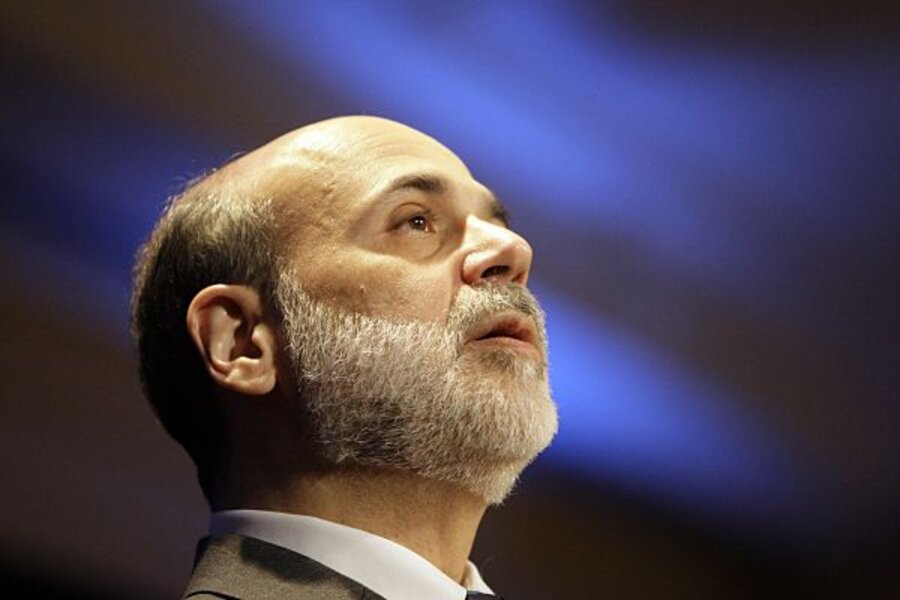In surprise move, the Federal Reserve raises a key discount rate
Loading...
| New York
On Friday, the markets will have to digest the Federal Reserve’s surprise decision to raise a key interest rate, in a move the central bank says is designed to “normalize” its lending fees.
European and Asian stock markets lost ground after the Fed’s move. The dollar strengthened, and the euro hit a nine-month low. The price of gold fell sharply overnight. In the first half-hour of trading, the US stock market was lower – although not too sharply.
“The markets are trying to size this up,” says Bob Brusca of Fact & Opinion Economics in New York. “Right now, the equity markets are taking it with some degree of difficulty.”
At the same time, the stock market will try to factor in a government report released Friday morning that said that the Consumer Price Index, taking out food and energy, fell by 0.1 percent in January. Including food and energy, prices rose 0.2 percent. The Fed often hikes interest rates if it feels inflation is on the rise.
“I think the Fed will be pretty content with this report,” says Mr. Brusca.
Consumers won’t see an immediate impact from Thursday’s hike. The Fed’s move to increase interest rates by .25 of a percent at what is called the “discount window” will have no effect on credit-card interest rates, mortgage rates, or business loans. All of these loans are based on different baselines, which remain unchanged. The move could have an effect on bank profits if the institution has to go the Federal Reserve for an emergency loan. But most banks try to avoid using the discount window to avoid the “stigma” of borrowing that way. More than anything else, the Fed’s move is a signal.
For months, economists have been debating when the Federal Reserve would begin to raise interest rates. Would it be this spring, as companies start rehiring? Or in June, once the economy was back in the saddle? Or maybe even at the year-end, so it could be certain the economy did not falter?
But almost no one expected the Fed to start on Thursday.
“Why surprise the markets?” wrote David Kotok, chairman of Cumberland Advisors, money managers in Vineland, N.J., in an analysis sent to clients.
“If you do surprise the markets, then why go to great lengths to explain that you are not tightening, and that the policy is the same as it was before the announcement,” he wrote.
Mr. Kotok says the surprise factor now adds uncertainty into the markets. “And somewhere, some person is not going to get hired because this uncertainty has raised the risk of hiring to the employer,” he added. “That, friends, is a tightening.”
The Fed’s move is the first time the central bank has raised any interest rate since the housing bubble burst in the summer of 2007. However, in testimony before various congressional committees, Fed chairman Ben Bernanke has said the Fed is planning its “exit strategy” for when it can start to reverse the very low short-term interest rates which are currently between zero and one quarter of a percentage point. However, he has always indicated the Fed did not feel it was time to raise rates because of the fragile state of the economy.
And on Thursday, the Fed repeated that assertion by noting that its policy was unchanged from its meeting in January, when it opted to leave the federal funds rate, the rate banks charge other banks to borrow overnight, low for “an extended period of time.”
Although some investors view the Fed’s move as a tightening, the stock market has not always responded badly to the start of interest rate hikes, writes Sam Stovall, chief investment strategist at Standard & Poor’s Equity Research, in a morning report. Between 1946 and 2009, he finds that the S&P 500 rose 2.6 percent in the six months after the start of a rate-hiking cycle.
However, this is down from a normal gain of 4 percent every six months over that long period.





